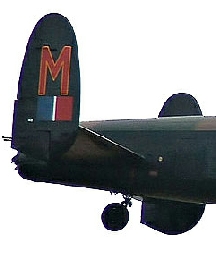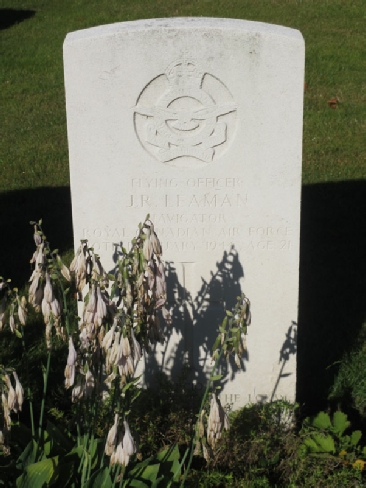




The real treasure hunt
The only thing we knew from the plane was that it was a bomber, that it has crashed in the Land of Saeftinghe near the village of Paal and that (probably) all the victims (one speaks of at least four) were recovered. But were there still bombs on board?
At the institude for Air Force Aviation History and the SGLO there are lists of the 7,000 incidents in the Netherlands. Over the years, all crashes have been collected, but the file is not yet complete. The one at Paal in the Land of Saeftinghe is not in the list.
The piece of corroded metal with the bakelite component turned out to be a so called "connector box" of the radio equipment. The characters 1274-
The numbers found on the parts of the tailpiece made it clear that it was a tail dome from a Lancaster. This conclusion was already drawn when it was salvaged.
A total of 7,377 Lancasters were built during the war, of which more than 3,600 were lost. Our wreck in Saeftinghe had to be one of these 3,600. The base of the gun turret turned out to be a Frazer Nash. In this case manufactured under license by Boulton Paul, a well known turret builder.
Here too we found numbers, but unfortunately gun-
The archives of the cemeteries are another source of information. In Zeelandic Flanders, all Allied casualties were transported by the Germans to Vlissingen-
Jaap Geensen en Mark Zwartelé,
Werkgroep Archeologie Hulst

The exploration
It was always known to the residents of Paal that at the end of the second world war a bomber crashed in the water near the harbor. The wreck would still be there in the so called Speelmansgat, one of the many trenches in the Land of Saeftinghe. Some former residents of Paal (in particular Mr. J. d’Haens and Mr. W. van Immerseel) were able to provide some information to put us on our way. The exact location, date, aircraft type, nationality, crew, cemetery and even the year apeared to be unknown. A search along the eastern bank of Speelmansgat at extra low tide did not yield any aircraft remains.
In May 2013, we did another search under identical conditions, but now we searched along the western bank. This time we were more lucky.
We found pieces of heavily corroded metal that might have come from an airoplane. We also saw scattered pieces of lead battery plates. An outright hit was a metal plate with a bakelite casting on top. On that casting there was a small English crown and the capitals AM, followed by a reference number 5C/430 (see image 5).
There was no doubt about it: AM stands for Air Ministry, the Brittish aviation ministry.
On our way back home we saw on the dry soil of the western bank something protruding above the mud. Our first conclusion : "This is a tailpiece of an airoplane".


Next steps
The so called "Drowned Land of Saeftinghe" is a protected nature area; so digging is not allowed there . Every soil find must be reported to the Cultural Heritage Foundation Zeeland (SCEZ). In addition, in the event of aircraft debris, the Royal Dutch Air Force Salvage Service (BKL) must be engaged.
After permission from the manager of Stichting Het Zeeuwse Landschap (resposible institute for the Land of Saeftinghe), it was decided to inform the relevant authorities and to see whether a further investigation on site was possible. An appointment followed with Mr. Jongepier from the SCEZ and Major Kappert from the BKL.
Arrived on the site, the metal part was still visible. We decided to recover it for two reasons: The first reason was to prevent unauthorized "treasure diggers" from taking possession of it. The second reason was that it could help with identification of the plane. The excavation went well. The large piece was handed over to Mr Jongepier for temporary storage in the SCEZ depot. A few pieces on which numbers were suspected went to the BKL.



The German occupation in Zeelandic Flanders was arranged as follows: in Oostburg was the 712 Infantry Division. Terneuzen also belonged to this area. The area east and north of Hulst was named "Verteidigungs Abschnitt Antwerp West". The responsibility lay with I/Grenz Schütz Regiment Clüver that had its headquarters in Hulst and the 14th Company that was stationed in Lamswaarde. They were directly under the command of "Antwerp".
Perhaps that's why the victims were taken to Antwerp? The most important war cemetery there is The Schoonselhof. Thanks to Mr. Luc Vervoort we were given access to the register of the 6,500 graves. Of the several hundreds of pilots we could easily determine where they crashed. Almost at the end of our search a list of eight Lancasters with more than three victims burried here at the Schoonselhof remained.
Finally one Lancaster remained: construction number LL720 of the 408 Squadron RCAF with the hull code EQ-
Eyewitnesses said that the device came burning down. This indicated the activity of a German "Night Hunter". Theo Boiten, author of a standard work on the Night Hunt, told us when asked: "I have a claim for this coffin from Oberst Leutnant Eckhart-
From the first eyewitness we had heard that four victims had been taken out of the wreck in the morning. According to him, the striking thing was that the name "Bomb" was found. That word was written down by the Germans. He thought it was an appropriate name for someone in the plane. Probably it was about the bomber. The original German burial card appeared to be present between the military data retrieved in Ottawa from the bomber J.R Bonneville. The storage location was then indicated as: "Paalen, 15 km north of Hulst".
Moreover, the communication from the Red Cross in Geneva showed that the four from the LL720 were buried together on February 24, 1944, at Deurne airport (The so called Fort 3). The other three crew members were not recovered at the same time. This confirms that the plane that crashed at Paal was indeed the Lancaster LL720 of the 408 Squadron of the Royal Canadian Air Force.
The crew of the Lancaster consisted of seven men who were all killed in the crash:
Pilot: E.S.WINN 23y, RCAF
Navigator: J.R. LEAMAN, RCAF
Bomber J.R. BONNEVILLE 23y, RCAF
Radio/Gunner: R.H. WADE 26y, RCAF
Gunner: E. DRAMNITZKI 22y, RCAF.
Flight engineer E.W.BOLT 24y, RAF,
Gunner N.H.H.BROWN 21y, USAAF
The Lancaster with hull code EQ-
With the photos:
1. Lancaster bomber from WW2.
2. Digging in the Saeftinghe for parts of the device
3. The lower part of the tail dome.
4. The tail dome.
5. A part of the radio equipment.
6. Inspection stamp (29 = the inspector).
7. Grave of J.R. Leaman (navigator).
8. Logo of Squadron 408.





Back to:
